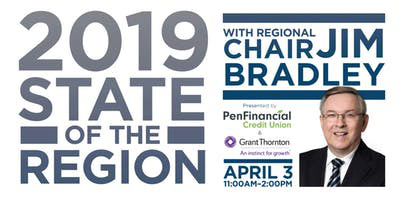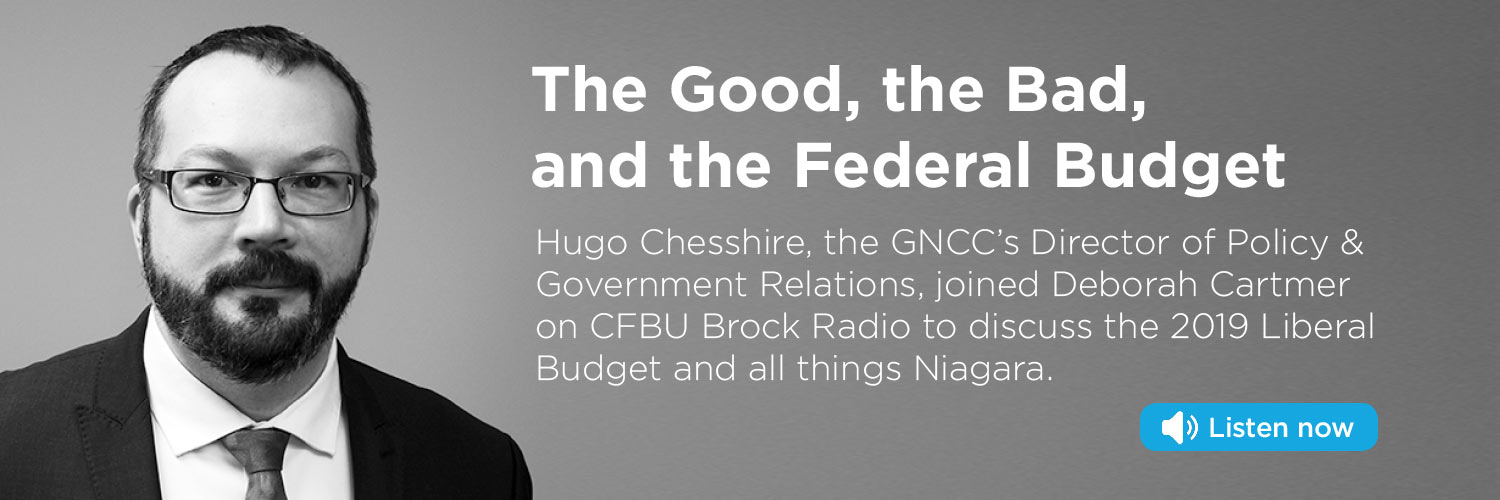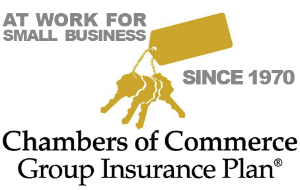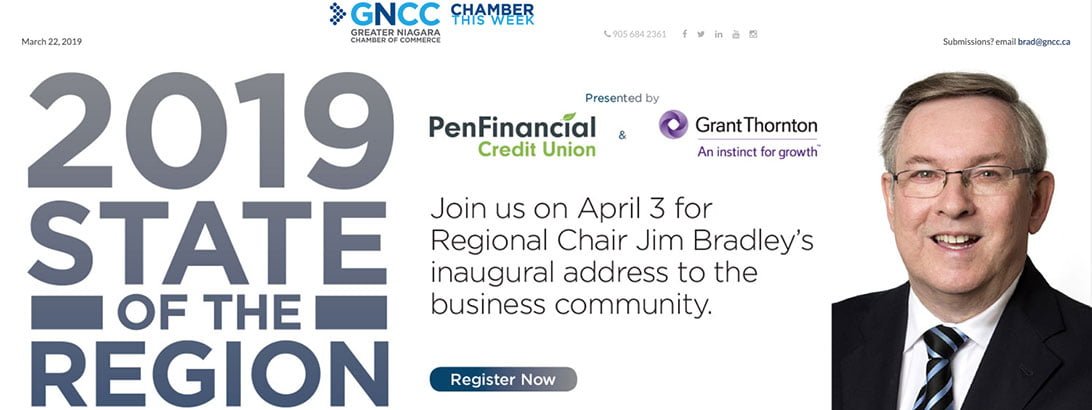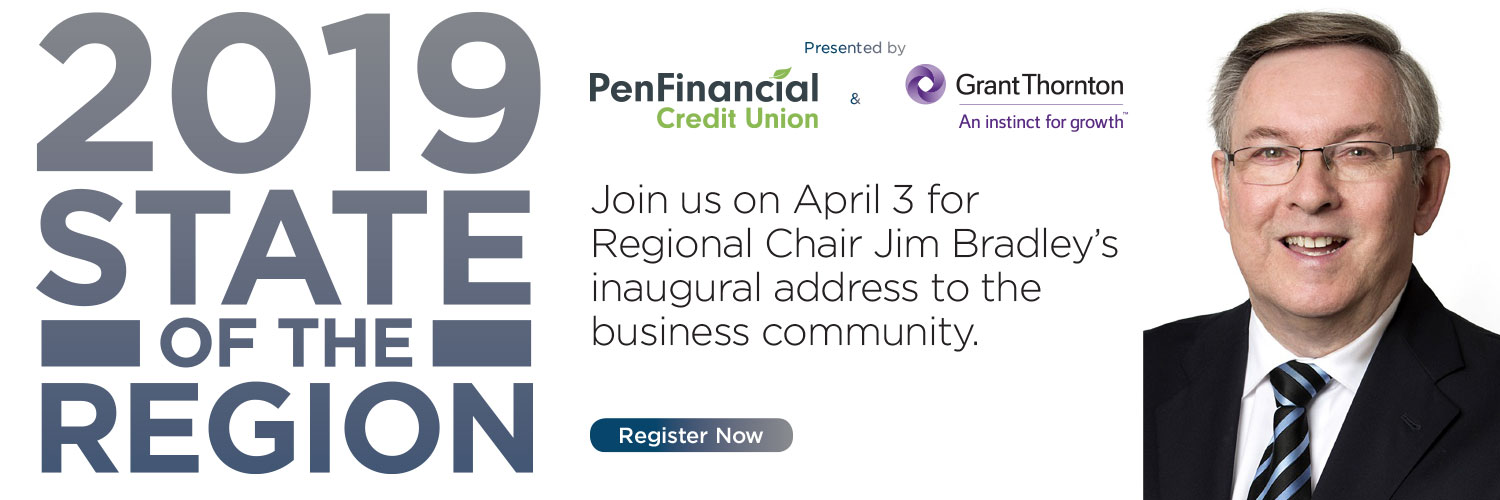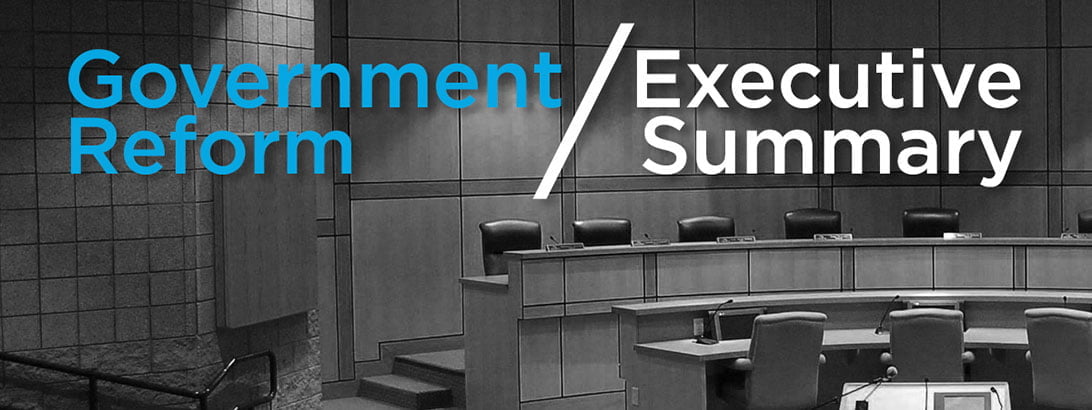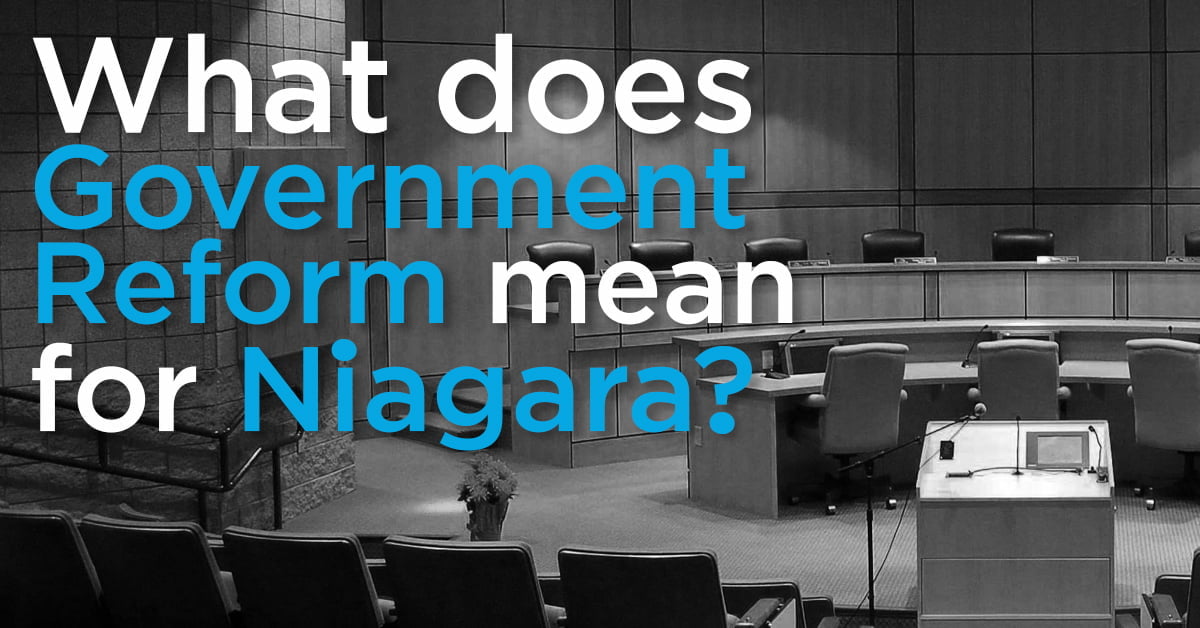
Download our Executive Summary and Full Government Reform Paper below:
Executive Summary – Reform (PDF) Governance Reform Paper – (PDF)
Preamble
Although the Region and the twelve municipal governments are co-equal, they will be referred to as upper- and local-tier respectively in this document for the sake of brevity.
The Regional Municipality of Niagara was created in 1970 and was contentious from the start. Attempts at reform from within Niagara have been abortive, with even relatively small measures such as the exploration of dual-direct representation by St. Catharines having met with failure. The most recent attempt at reform was the decision by the Wynne Government of Ontario to elect the Regional Chair directly, which was reversed by the Ford Government of Ontario before the first such election could be held.
That same government has announced an intent to review and potentially reform the governance structures of several regions in Ontario, including Niagara. It should be noted that the law of the land allows the Province to impose these changes unilaterally, without assent or even input from the municipal governments of Niagara, should it so desire.
That being said, the Province has made a commitment to consultation and information-gathering at a fast pace before decisions are made. This background paper makes no recommendations for the ideal model of Niagara’s government. Indeed, there can be no ideal model of governance for Niagara or for any polity, merely a compromise between conflicting priorities. This background paper attempts to lay out the most important of those priorities and the major ramifications of several potential models. It is hoped that this will lead to a more informed decision.
Executive Summary
The current government structure in Niagara has existed since 1970, since which time our communities, our economy, and technology have all changed. There are new pressures on government and new demands from citizens. Government structure reform may resolve some of the issues facing us, but each potential model has pros and cons.
- Cost. Historical amalgamations have resulted in substantial costs to taxpayers, chiefly driven by the speed of amalgamation.
- Efficiency. Larger municipalities enjoy economies of scale on capital projects, but research does not clearly identify the optimal size of a government.
- Staff costs. 80% of a municipal government’s expenditures are on labour-intensive services, which do not respond to scaling.
- Accessibility. More politicians mean more to staff committees, do research, and engage with citizens.
- Overrepresentation. Niagara has more politicians per capita than any other sizable Ontario community.
- Democratic deficit. Due to the way council seats are assigned and the number of councillors is set, some citizens of Niagara have more powerful votes than others.
- Community character. Many fear that the unique character of communities will be lost in an amalgamation.
Common Issues
Cost
It might be expected that amalgamating governments and eliminating positions in the ranks of both elected officials and the civil service would result in cost savings. Research on municipal amalgamations as far back as 1848, especially those imposed by a provincial government, indicates that this is never the case.[1] In fact, municipal amalgamations generally come with a substantial expense to the taxpayer attached.
Ontario’s amalgamations in the 1990s were very expensive for the municipalities involved, for example, with property taxes increasing 50% in Haldimand County, municipal employee compensation in Kawartha Lakes increasing 52.8%, and long-term debt increases of 41.5% in Essex and 111% in Norfolk.[2] These are particularly relevant as they occurred in amalgamations outside the GTA, which is almost a rule unto itself and may not always be compared directly with Niagara. The amalgamation of Halifax was 160% over-budget, and predicted cost-savings did not materialize.[3]
The chief driver behind these particular costs is the speed of amalgamation. Rapid amalgamation drives up costs through forcing the payout of senior staff contracts; through collective agreements ‘bargaining up’ through renegotiation before expiry, increasing staff costs; and through the hurried merger of systems and departments without enough time to study the problems and to discover and implement best practices.
Many, if not most, of these costs can be avoided with sufficient time taken in the process. A short timeframe for change (e.g. under a year) is likely to be very expensive for the taxpayers of Niagara. Moreover, with the Province at a very high level of public indebtedness and facing the likelihood of large budgetary deficits, it may not be wise to rely on the Government of Ontario to cover all, most, or even some of these costs.
Efficiency
Efficiency is often cited by policymakers as a reason for amalgamation and creating larger governments. This was a major impetus for the Ontario amalgamations of the 1990s, for instance. Research shows that there is some truth to this. Economies of scale can generally be commanded by larger organizations with greater purchasing power, but there is no consensus in research on whether this applies to municipal government. In any case, around 80% of a municipal government’s expenditures are on labour-intensive services and processes, which do not respond to scaling up.[4]
For example, if a municipality purchases buses for its transit system, it may negotiate a cheaper per-unit price when purchasing a hundred rather than ten, which only a larger municipality may do. However, bus drivers must be paid the same regardless of whether ten or a hundred are employed, and the largest expense of operating a public transit system is in personnel rather than capital equipment.[5]
However, there is a limit to the optimal size of a municipal government, beyond which studies show diseconomies setting in. One report found that the greatest efficiencies tend to be found in the governments of communities between 25,000 and 250,000 people.[6] However, another found that there was no correlation between council size and economies of scale, making the research on this question inconclusive at best.[7] Researchers speculate that smaller communities cannot afford specialized staff and economies of purchasing power, whereas larger ones start to suffer greater economies of scale being offset by the increasing unwieldiness, overheads, and slower decision-making processes of very large organizations.
Access to Elected Representatives
A factor offered by several elected officials in Toronto opposed to the recent downsizing of their municipal government was that more elected officials theoretically means greater access to those officials, as each has more time for constituents and can spend more time engaging with their community while discharging their duties in government.
However, this is also connected to other factors including the workload of elected officials, whether they serve part- or full-time, whether they are allocated staff, and which inquiries can be given to staff. As with many other fields, there is likely some correlation between the remuneration to elected officials, their quality and competence, and their ability to multitask and work quickly.
The GNCC’s survey found that access to elected officials was the lowest-ranked priority for respondents, and that 79% of respondents would tolerate some level of reduced access to elected officials if it also meant fewer of them. Thus, access to elected representatives should likely receive low priority in considerations of government models.
Overrepresentation
Of all Ontario census divisions with populations over 250,000, Niagara has the highest number of municipal politicians per capita. The average is 10 elected officials per 100,000 residents; Niagara has 28. While this may allow good access to elected officials, it can also lead to logjams in government, overly long meetings, fractious debates, and factionalism.
Federal and provincial ridings are drawn up to include a roughly equivalent population in each (this is the reason why areas in the city limits of St. Catharines fall into ridings other than St. Catharines, for instance), and so Niagara is typically represented at these levels.
The issue is at the municipal level, where each of Niagara’s twelve municipalities has a city council and a Mayor and, except for Wainfleet, also elects regional councillors to the upper-tier government. Additionally, not all councillors serve in the same manner, with some (e.g. Niagara Falls) electing at-large, i.e. each councillor represents citizens of the entire city, while others (e.g. St. Catharines) elect by ward, meaning each councillor only represents the citizens of a smaller sub-geography of the city. While it is hard to prove beyond doubt that councillors represent their smaller geographies over the interests of the larger community, local journalists and citizens have sometimes expressed a fear that they do.[8]
Democratic Deficit
At the Regional level, not all votes are equal, since the number of regional councillors for a jurisdiction does not neatly correspond to population. This problem also exists at the municipal level. Wainfleet, for example, has one alderman for every 1,593 residents; St. Catharines has one councillor per 11,093. The number of regional councillors per 25,000 residents varies from 1.1 to 3.9 in Niagara.
Effectively, this means that some citizens are better-represented than others and have more power per-capita than others. This is a common issue generally: rural communities are often better-represented in legislatures than urban ones on a per-capita basis. There is an argument that sheer population means that rural communities would be habitually outvoted if voting weights were equalized and would be completely unable to advance their own interests in the event they ever conflicted with those of an urban community. Conversely, the 82% of Canadians who live in cities may feel it is unfair that the 18% who do not are able to consistently outvote them. Settling this argument is beyond the scope of this background paper, however, a review of governance models should account for the democratic deficit.
Community Character
A common objection to amalgamation is that the individual character of communities would be lost if those communities were not self-governing. Such arguments were advanced, for instance, when Merritton and Port Dalhousie were amalgamated into St. Catharines.
The results of the GNCC’s survey revealed that public opinion was divided on this question. 49% of respondents felt there was no risk to the unique character of a community if amalgamated into a larger one, but 45% felt that there was at least some measure of risk. A slim majority of 55% felt that losing the character of a community would be an acceptable price for governance reform.
There is little research consensus on whether smaller communities are politically advantageous. Some finds that smaller communities are associated with more community, social trust, and political trust. Citizens of smaller communities report higher rates of voting, participation in political meetings, and contact with city officials.[9] However, other research indicates that increased population size as a result of amalgamation is more likely to generate fruitful political debate and a stronger civil society.[10]
An objective assessment of loss of community character is likely impossible, and studies of this subject would have to rely on survey data from residents. Nevertheless, this is an issue to be mindful of. Community character may be best preserved through programming such as events and festivals in the community, although these cannot generally be written into the governance structure and will rely upon political will—and budget—for their existence.
Government Models
Status Quo
Niagara’s government structure remains unchanged
The existing structure of Niagara is twelve municipal governments and one Regional government, with some responsibilities devolved to the local-tier (e.g. snow removal) and some to the upper (e.g. waste collection), and some duplication of services (e.g. economic development). The simplest option is to continue with that model, as we have since 1970.
Structural problems with the status quo would continue. However, it is important to note that many recent stresses in Niagara’s governance can be attributed to strategy executed within the framework of the structure rather than the structure itself, and that these stresses do not necessarily have to survive if the current system is preserved, nor would they necessarily be eliminated by a new structure.
- Cost. Maintaining the status quo would almost certainly be the most inexpensive option for taxpayers. As outlined above, governance reform and amalgamation has inevitably resulted in expenses, therefore, the only sure way to avoid them is to avoid action.
- Access to elected representatives. The corollary of overrepresentation is that Niagara’s politicians are more accessible to the governed. A large number of representatives means that individual elected officials have more time for each. However, the importance of this factor may be overstated and is not generally recognized by Niagara’s citizens.
- Duplication. There are services duplicated at both the municipal and regional levels. Additionally, there are two sets of by-laws and permitting systems, which can hamper business development with red tape. These factors would go unaddressed, although, in theory, reforms within the current governance structure could address them. This is an issue of political will and cooperation, which have evidently been insufficient to drive such changes thus far.
- Overrepresentation & democratic deficit. The status quo structure has created the overrepresentation and democratic deficit problems outlined above. Preserving it necessarily preserves these problems as well and, unlike the issue of duplication, there is no way to resolve them without structural changes.
Double-Direct
All Regional councillors also serve on city councils
The double-direct concept (so named as a representative is directly elected to double positions) has city councillors also serve as regional councillors. St. Catharines explored this concept in recent years, but the measure was voted down by St. Catharines city council. This reform would not fundamentally change the governance structure of Niagara, but would reduce the number of politicians by effectively eliminating all dedicated regional councillors (19 politicians in total, as mayors are already double-direct).
- Reduction in size of government. While this would only eliminate 19 political posts in Niagara, it would probably be the least disruptive method of reducing the number of politicians, as it does not touch on any other roles. Considering Niagara’s status as the most-governed sizeable census division in the province, some may feel eliminating 19 out of 126 positions does not go far enough. The debate over the optimal number of elected officials per capita is outside the scope of this background paper.
- Double-direct shares a low execution cost with preserving the status quo. Since only 19 political positions are eliminated, there would be no expensive costs to merging, collective bargaining, and payouts. The expense to the taxpayer would be minimal.
- As double-direct does not, in and of itself, involve mergers of departments or government staff, as in the status quo scenario, all bureaucratic overlap and red tape is preserved. However, as noted above, addressing this issue is possible within the existing structure.
- Democratic deficit. As the number of regional councillors has not changed, the issue of democratic deficit remains identical to that in the status quo, with some municipalities over-represented on regional council.
- Conflicts of interest. City councillors are elected to represent the citizens of their municipality. Niagara regional councillors are elected to represent the interests of the region. As was pointed out in the public debates when St. Catharines explored double-direct representation, some elected officials may find their loyalties divided and may, for example, attempt to site regional capital projects in their own municipality for the economic boost rather than in the municipality that makes the most sense for the entire region. It should be pointed out that political behaviour depends as much, if not more, on norms than on structure.
Limited local-tier mergers
Some Niagara municipalities are amalgamated
This would involve preserving the two-tier nature of Niagara’s government, but merging some of the local-tier municipalities together, reducing the total number of governments and politicians. This background paper offers no suggestions on which municipalities could or should be merged, which is a question for further study. A starting-point could be those municipalities so small as to be inefficient and those which have economically or geographically tied themselves into their neighbours.
- Preservation of community character. By preserving some local-tier municipalities, this model avoids the problem of “erasing” the individuality of Niagara communities that would be encountered under a single municipality model. However, “losing character” is a potential risk to those municipalities undergoing amalgamation.
- Local-tier municipality mergers would entail less cost than a complete amalgamation of Niagara. However, research unequivocally shows that mergers carry a price tag. The cost would depend on which municipalities were merged, how they were merged, and how long the process took, but Niagara taxpayers must expect to pay a price on their property tax bill for this kind of reform.
Operational mergers
All governments remain in place, but some departments are merged
Mergers and amalgamations do not have to be at the level of elected officials. There are many services and departments duplicated at the municipal and regional levels, and many more that are run locally but could be uploaded regionally. An alternative or supplemental plan would be more formalized structures for cooperation between departments and agencies. Examples include Team Burlington, launched out of a need for refocused investment attraction and including business associations, utilities, economic development and municipal government, or We Will Take Care of That, an Ottawa project that created a one-stop shop to serve all the government form and application needs of businesses.[11]
- One single department would be more efficient than many and would not work at cross-purposes with itself as much as some regional and municipal departments have. Red tape would be reduced, and many conflicting or overlapping regulations and requirements could be eliminated.
- While long-term cost savings would probably result, if not done carefully and over time, increased costs could result from collective bargaining, staff payouts, and the costs inherent to merging procedures and systems from disparate departments. These costs would largely be avoided with cooperation structures, which would not necessitate changes to the comprising departments. However, devoting staff and resources to such structures—which they would need to be truly effective—will entail some cost.
- Overrepresentation and democratic deficit. Since this measure would only affect staff departments, no action would be taken to address either the exceedingly high ratio of elected officials to citizens, or that some Niagara citizens are much more well-represented than others.
- This bottom-up approach requires a level of willingness, cooperation, and good faith that may be hard to attain in Niagara simply due, if nothing else, to the large number of communities, organizations, associations, and governments in the region and their differing interests, real or imagined. Attempts made in the past (e.g. the Niagara Original project, previous efforts at amalgamated public transit, or economic development mergers) have been abortive or unsuccessful. In the end, it may require the Province to impose such changes upon Niagara, although the provincial government suffers a paucity of information relative to local actors and may not be able to make optimal choices.
Abolition of Niagara Region
Lower-tier municipalities remain in place while the Region is abolished
One option would be to abolish the nearly-50-year-old Niagara Region and return Niagara to twelve municipalities with no fourth level of government. This might also be combined with some amalgamations at the local-tier level. This was the preferred method of reducing the number of municipal politicians of the Thatcher government in the UK, which eliminated many upper-tier municipalities.[12]
- Although not as expensive as complete amalgamation, all of Niagara Region’s services and departments would have to be downloaded onto the local-tier municipalities. There would be transition costs associated with this transfer. Economies of scale enjoyed by the Region would be lost to varying degrees as services were transferred to smaller governments. Alternatively, the remaining governments could agree to create regional commissions, although their governance would necessarily be more complex.
- Eliminating the Region would eliminate the overlap and duplication between local- and upper-tier government services, however, by devolving all services to local-tier governments, opportunities for cost-savings through economies of scale would be lost. Further, many municipalities would have to find new solutions to local issues (St. Catharines, for instance, would have to either find landfill sites within city limits or outsource waste disposal to another municipality, both of which are likely to be more costly and less efficient than the current Regional solution).
Multiple large municipalities
Niagara is remade into a small number of municipal governments
At the federal and provincial levels, Niagara is divided into four ridings of roughly equal population. This could be used as a model for restructuring Niagara, with or without a regional government of the whole, or Niagara could be amalgamated into two or three municipalities instead. With the exception of St. Catharines, which would likely form a single municipality due to population alone, these amalgamated municipalities would contain a blend of rural and urban centres.
- As with all large-scale amalgamations, there would be costs to the taxpayer involved. Departments would have to be merged and collective agreements renegotiated. Based on previous experience, these costs would likely be substantial. This would be among the most expensive methods of reforming the governance structure. If the Region were abolished as part of the reform, additional costs would accrue from the need to redistribute Regional services among the new municipal governments.
- Larger municipalities could potentially negotiate better economies of scale, although as noted above, this would not affect most municipal operations and the reality of such economies is debated in the literature.
- If divided into four along provincial and federal lines, Niagara’s districts would each have one MP and one MPP, allowing for a more unified voice in Ottawa and Queen’s Park that might help Niagara attract greater attention from higher levels of government.
One Niagara
Niagara is amalgamated into a single municipality
Perhaps the simplest concept, this would merge all twelve municipal governments and Niagara Region into one. This might mean making the Regional government the only municipal government, or it might entail a completely new structure. However, despite its apparent simplicity, this would be one of the most complex and costly reforms to undertake, at least in the short-term.
- Based on experiences from Ontario in the 1990s, Halifax, Quebec, Western Europe, and others, this solution is likely to be very expensive.[13] Niagara should be prepared for substantial property tax and/or capital debt load increases as a result, at least in the short-term.
- A single government would command the largest economies of scale, enabling the greatest savings. However, as pointed out above, 80% of municipal expenses are in labour-intensive processes and do not respond to scaling-up. This model would also eliminate departmental overlap and duplication in the opposite mode to abolishing the Region. However, some research indicates that municipal efficiency peaks at a population of around 250,000; with a population of 448,000, a single City of Niagara would likely be less cost-efficient than the cities of St. Catharines, Welland, and Niagara Falls currently are.
- Reduction in size of government. This would potentially eliminate the bulk of elected officials in Niagara, potentially making decision-making swifter and political meetings more succinct. However, it should be borne in mind that fewer politicians also means less time to devote to subcommittees, research, and constituent outreach, although Niagara citizens surveyed by the GNCC did not prioritize the latter. Absence of conflict is not necessarily a sign of healthy governance, however; it can also indicate that large problems are being ignored.[14]
- Shift in development. The 1972 amalgamation of Winnipeg saw suburban development while inner-city investment was neglected. In 2002, another organization, the Capital Region Committee, had to be created to address this problem.[15] Inner-cities have been problem areas for municipal governments in the developed world since the 1950s. A single government may decide to pursue the easier options of developing and investing in outlying areas rather than urban cores.
Redistricting
Niagara’s boundaries are redrawn
One potential political redrawing of Niagara is one that changes what Niagara is. It may be that communities in western Niagara have more in common with Haldimand than with Niagara’s urban centres. Statistics Canada already designates Grimsby as part of Hamilton Census Metropolitan Area (CMA) according to commuter flow, while West Lincoln, lacking any commuter flow integration with another community, is designated part of non-CMA Ontario. However, one might also argue that Grimsby, although economically more integrated with Hamilton, is culturally more similar to Niagara, with its smaller communities, agricultural base, and urban/rural blend, than with the relatively metropolitan and industrial Hamilton. It should, however, be noted that Haldimand and Hamilton’s governance structures are not within the mandate of the Province’s review.
Although controversial, dividing Niagara is a possibility that should be impartially considered. Grounds for this may include the geographical (where are the major geographical features that could delineate the “end” of Niagara), the demographic (where do people tend to consider themselves Niagaran), the economic (which broader community is a smaller community integrated with), and the cultural (which broader community has more in common with the smaller community).
- Preservation of community character. Rural communities in Niagara may have their character better-preserved by integration with other rural communities rather than with urban ones. Amalgamation with other rural communities outside Niagara may be more attractive than subsumption into an urban community within it.
- A common expense from amalgamation has historically arisen when smaller communities, once amalgamated, begin to demand services at a comparable level with the larger ones they had joined with. By splitting these communities off, Niagara may avoid these problems. However, as noted above, amalgamations of any kind carry costs.
Conclusions
This background paper offers no conclusions on which governance model should be best. The governance reform survey undertaken by the GNCC in January-February 2019 was an effort to understand the requirements Niagara has of its government, and this background paper attempts to briefly explore the connotations of each model, in necessarily broad strokes.
In the GNCC’s survey, almost half of respondents felt that mergers and amalgamations posed a risk to the unique character of their communities. If the outcome is a merger or amalgamation, we urge that steps be taken to reassure citizens that the unique character of their community will be preserved.
A more detailed examination as a prelude to legislation should do the same. The first assessment must be to establish which form of government is “best,” not only from the perspective of the citizenry but from those of experts who understand problems such as economics and cost which, although not well understood, will nevertheless have an enormous effect on Niagara. Having established that, the second task is to find the government model best suited to meet our needs. Approaching this reform with a model already in mind is a recipe for failure and for a flawed governance model which Niagara may be saddled with for another fifty years.
Bibliography
| Boyne, G. Scale, performance and the New Public Management: An empirical analysis of local authority services. Journal of Management Studies, vol. 33 no. 6, 1996. |
| Denters, B, Goldsmith, M, Ladner, A, Mouritzen, PE, Rose, L. Size and Local Democracy. Edward Elgar, 2014. |
| Holzer et al. Cited in Antonio F. Tavares. Municipal amalgamations and their effects: a literature review. Miscellenia Geographica, vol. 22 no. 1, 2018. |
| Kelleher, C, Lowery, D. Political Participation and Metropolitan Institutional Contexts. Urban Affairs Review, vol. 39, no. 6, 2004. |
| Miljan, Lydia & Zachary Spicer. Municipal Amalgamation in Ontario. Fraser Institute, 2015. |
| Report on Municipal Rescaling & Regional Cooperation. Prepared for Executive Directors of Municipal Associations & Provincial/Territorial Deputy Ministers Responsible for Local Government, June 2011. Retrieved from https://auma.ca/sites/default/files/Advocacy/Programs_Initiatives/Intermunicipal_Cooperation/intermunicipal_cooperation_-_canadian_resources_report_on_municipal_rescaling.pdf on Feb 02, 2019. |
| Sancton, Andrew. Merger Mania: The Assault on Local Government. McGill-Queen’s University Press, 2000. |
| Swianiewicz, P. Size of local government, local democracy and efficiency in delivery of local services—International context and theoretical framework, In P Swianiewicz (ed.), “Consolidation or fragmentation? The size of local governments in Central and Eastern Europe,” chapter 1, pp. 1-29. 2002. |
[1] Sancton 2000
[2] Miljan & Spicer 2015
[3] Sancton 2000
[4] Holzer et al 2009
[5] This is a key reason why transit commissions do not run small buses on less-used lines: the bulk of the expense is paying the driver, which is unaffected by the size of bus, and smaller buses are less flexible and cannot operate on a busier line when called upon.
[6] Holzer et al 2009
[7] Boyne 1996
[8] St. Catharines Standard, letters to editor: https://www.stcatharinesstandard.ca/opinion-story/8190581-letters-to-the-editor/
Grant Lafleche, St. Catharines Standard, https://www.niagarafallsreview.ca/opinion-story/8190692-lafleche-dual-duty-now-on-life-support/
[9] Denters 2014, Oliver 2001
[10] Swianiewicz 2002
[11] Report on Municipal Rescaling and Regional Cooperation (2011)
[12] Sancton 2000
[13] Sancton 2000
[14] Kelleher & Lowery 2004
[15] Sancton 2000













